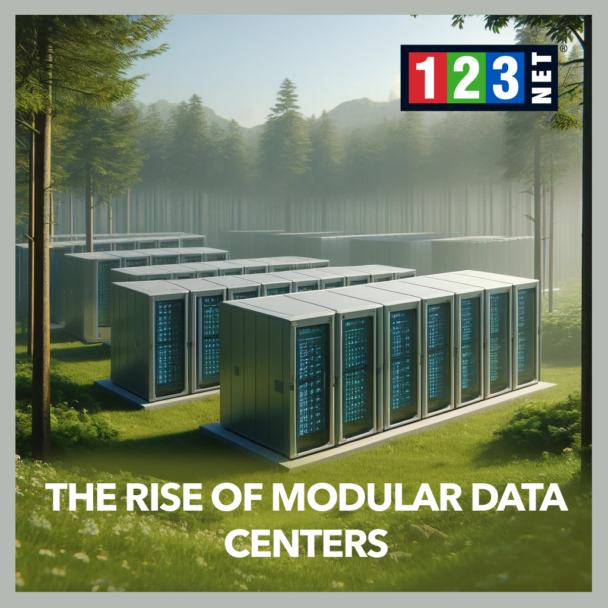
Introduction
A modular data center is a portable, scalable, and prefabricated solution designed to meet the demands of modern processing. Unlike traditional brick-and-mortar facilities, these data centers come in modules that can be easily deployed to various locations as needed. This adaptability has heightened their market significance as businesses look for faster and more cost-effective ways to expand their data handling capabilities. Modular data centers are not just about convenience; they represent a significant evolution in how the infrastructure is conceived, designed, and executed.
Advantages of Modular Data Centers
Speed and Flexibility in Deployment
Modular data centers stand out primarily due to their rapid deployment capabilities. These prefabricated structures can be made operational in a fraction of the time required for building traditional data centers. Typically, a standard modular unit can be deployed and operational within a few weeks, as opposed to the months or even years needed for conventional structures. This efficiency is due to the prebuilt nature of the modules that only need to be assembled on-site. Such speed not only ensures quick expansion of capabilities but also enables companies to respond promptly to market demands and technological advancements.
Cost-Effectiveness and Predictability
Economically, modular data centers offer significant advantages. The manufacturing of these units in a controlled environment helps keep the construction costs predictable and manageable. This contrasts sharply with traditional data centers, which are often plagued by budget overruns due to unexpected construction challenges. Modular setups avoid much of the financial unpredictability associated with traditional constructions by utilizing fixed costs and reducing labor expenses. These savings can be crucial for businesses looking to manage capital expenditure more effectively while expanding their data processing capabilities.
Sustainability Benefits
Sustainability is a key component of modern business practices, and contribute significantly to eco-friendly operations. These centers are typically designed with energy efficiency at the forefront, which serves to minimize the operational carbon footprint. Furthermore, the construction positively affects Scope 3 emissions, which include indirect emissions that occur in a company’s value chain. Since these facilities require less on-site construction activity, the impact on the environment is considerably reduced. This reduction in construction-related environmental degradation is becoming increasingly important as businesses seek to comply with stricter environmental regulations and societal expectations.
Moreover, the ability to deploy modular data centers in a variety of settings, including remote or environmentally sensitive locations, underscores their adaptability and the reduced ecological disturbance compared to traditional construction. This adaptability, combined with their inherent energy-efficient design, positions modular data centers as a forward-thinking solution that aligns with global sustainability goals.
In summary, modular data centers offer substantial advantages in terms of deployment speed, cost efficiency, and sustainability. These benefits make them an appealing choice for businesses aiming to enhance their data center infrastructure with minimal environmental impact, swift deployment, and controlled costs. As the demand for data processing continues to grow, the role of modular data centers is set to continue to expand. It is reflecting their critical place in the future of digital infrastructure.
Key Applications and Use Cases
Small and Gradual Deployments
Modular data centers are ideally suite for environments requiring scalable, flexible solutions. These facilities allow organizations to scale their data center operations in sync with their growth. This is avoiding the hefty upfront investments typically associated with large, permanent facilities. This model of gradual scaling is evidence in numerous case studies. This is where businesses have expanded their data processing capabilities incrementally, as dictated by their evolving needs. The nature of these data centers means that companies can start small and add capacity only when necessary. It is both efficient and economical.
Retrofitting Existing Facilities
Beyond new installations, modular data centers are also perfect for upgrading existing facilities. Many organizations opt to integrate modular units into their current infrastructure to enhance overall capacity or update aging technology. This method of retrofitting is a cost-effective alternative to building new facilities from scratch, as it extends the useful life of existing data centers while boosting their efficiency and performance. The flexibility of modular designs allows for bespoke configurations that fit specific site requirements without the disruption of a full-scale construction project.
Edge Computing
In the rapidly advancing arenas of 5G and low-latency applications, modular data centers are increasingly vital. These centers can be strategically place at the edge of networks. It enables processing of data closer to the source of data generation. This proximity significantly cuts down latency times, thereby enhancing the performance of real-time applications and improving user experiences. Edge computing, supported by modular data centers, is fundamental in industries where milliseconds matter. Such as financial services, healthcare, and automated manufacturing.
Hybrid Cloud and High-Performance Computing
The landscape of hybrid cloud and high-performance computing also benefits tremendously from the agility and speed of deployment offered by modular data centers. These centers provide essential infrastructure that supports complex and demanding applications, including artificial intelligence and big data analytics. By facilitating powerful computing resources near sources, modular data centers ensure that businesses can leverage the full potential of hybrid cloud environments. As well as high-performance computing without the traditional geographical and logistical constraints.
In conclusion, they are transforming the way organizations deploy, enhance, and manage their computing infrastructure. With applications ranging from small-scale, incremental deployments to supporting cutting-edge computing technologies, these versatile structures are pivotal in today’s data-driven world. Their role in enabling efficient, scalable, and technologically advanced data processing makes them indispensable for businesses looking to maintain a competitive edge in the digital age.
Challenges and Limitations
Customization Constraints
Modular data centers provide numerous benefits, including efficiency and cost-effectiveness. They possess certain limitations that may not make them suitable for every scenario. A primary constraint is the lack of customization. Because these centers can prefabricate, there is a limited scope for tailoring them to meet specific and unique operational needs. This can be a significant disadvantage for organizations with specialized requirements that a standard modular setup cannot accommodate. Companies needing highly customized environments might find traditional data centers more aligned with their specific needs. It will be offering them the flexibility to design and build according to precise specifications.
Large Data Center Projects
Another challenge associated with modular data centers is their scalability, especially in the context of large-scale projects. While modular units are excellent for incremental growth, they may not integrate well in larger, more complex deployments. The modular approach typically involves connecting multiple smaller units to scale up operations. However, this can become logistically complex and less efficient when attempting to scale to the size of large traditional data centers. These are a design from the ground up to handle vast amounts of data and high levels of traffic. The piecemeal nature of modular data centers might lead to inefficiencies or bottlenecks that could hinder performance and operational fluidity in large-scale environments.
Despite these challenges, modular data centers continue to be a valuable solution for many scenarios. They are particularly where speed, cost, and flexibility are prioritize. However, businesses contemplating the modular approach must carefully evaluate their specific needs against these potential limitations to determine the most appropriate solution. The decision will significantly depend on the scale of the deployment, the need for customization, and long-term operational strategies.
Industry Perspectives and Future Trends
The data center market continues to evolve, with modular data centers positioned as a significant growth area. Experts predict continued expansion in this sector, driven by the need for more agile and cost-effective data processing solutions. Industry leaders see solutions as integral to the future of data centers, emphasizing their role in sustainable and efficient management.

FAQs on Modular Data Centers
- What is a modular data center? A: A modular data center is a portable, energy-efficient facility made up of prefabricated units. These units can be quickly deployed and easily scaled, offering a flexible alternative to traditional data centers.
- How do modular data centers reduce deployment times? A: By using prefabricated modules, these data centers can be assembled on-site in a fraction of the time required for traditional constructions, significantly speeding up the deployment process.
- Can modular data centers be customized? A: While they offer some level of customization, the prefabricated nature of modular data centers may not meet all specific needs as flexibly as traditional ones can.
- What are the cost benefits of modular data centers compared to traditional ones? A: Modular data centers typically involve lower upfront costs, more predictable pricing, and reduced operational expenses due to their energy-efficient design and faster deployment times.




